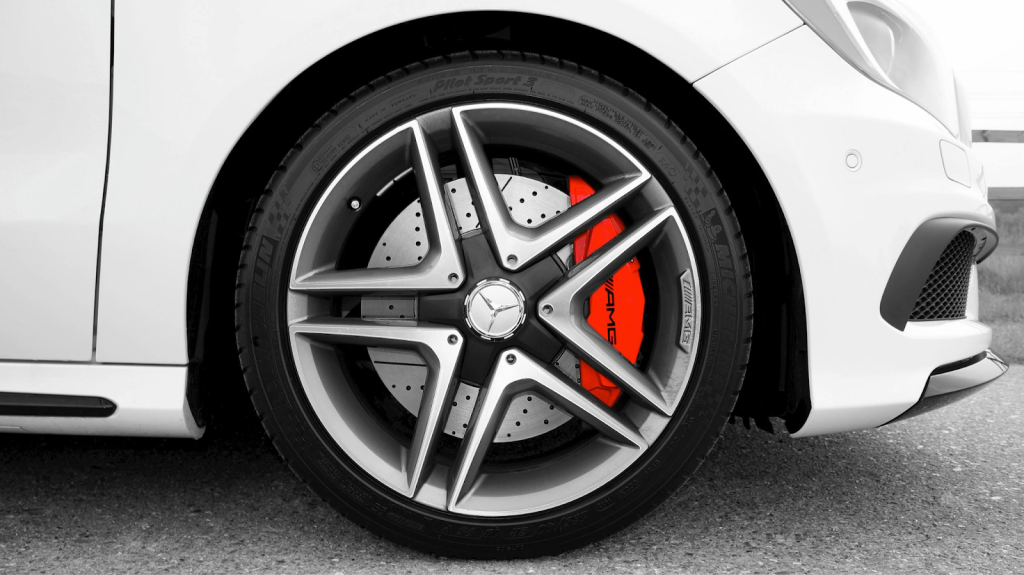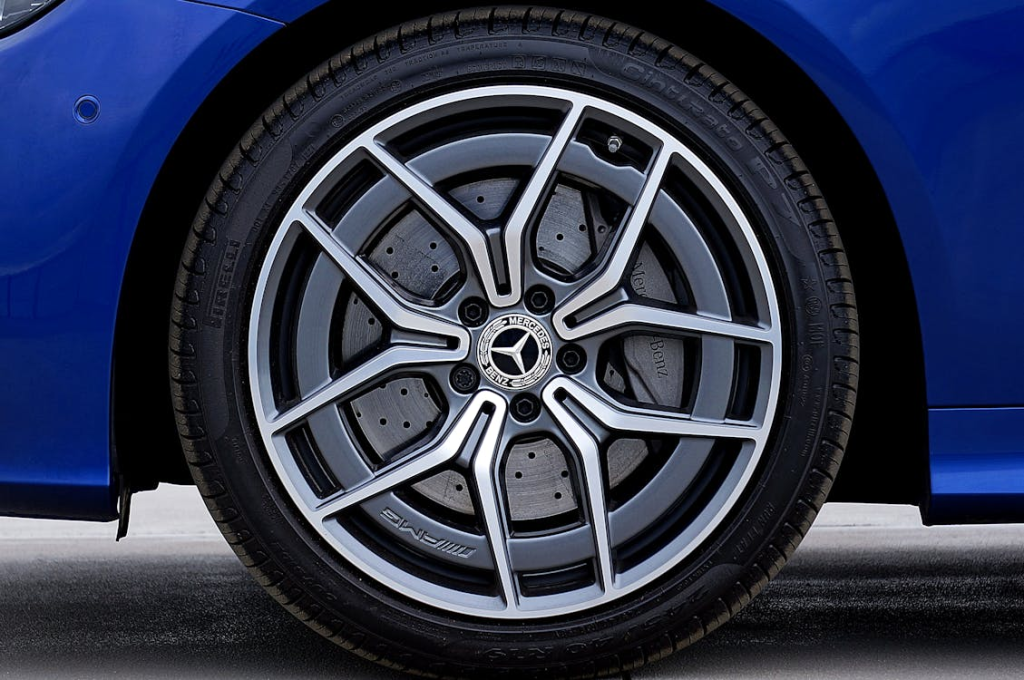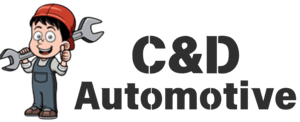If you’ve ever found yourself wrestling with the steering wheel just to keep your vehicle in a straight line, you’ve already experienced one of the clearest signs that your car might be out of alignment. Wheel alignment, also known as tire alignment, might not seem like a big deal at first glance, but its impact on your driving experience, vehicle safety, and even your wallet is more significant than most people realize.
At C&D Automotive in Fort Worth, TX, we’ve seen firsthand how neglected alignments can lead to bigger problems down the road—from uneven tire wear to costly suspension damage. Fortunately, wheel alignment is a quick, cost-effective service that can dramatically improve your vehicle’s handling and extend the life of your tires. Let’s explain why this service is so crucial and how staying on top of your alignment can keep your car in peak condition.

What Is Wheel Alignment?
Wheel alignment refers to the precise adjustment of a vehicle’s suspension system—the part that connects the car to its wheels. It’s not actually an adjustment of the wheels or tires themselves, but of the angles at which they meet the road. The process ensures your tires sit at the correct angles, promoting optimal contact with the pavement.
There are several specific measurements that technicians check during a wheel alignment:
- Toe: This is how much your tires point inward or outward when viewed from above. Think of it like the way your feet turn in or out as you walk—if they’re off, your stride suffers.
- Camber: This is the tilt of your tires inward or outward when viewed from the front of the vehicle. Too much tilt can mean uneven wear on the tire edges.
- Caster: Viewed from the side, caster is the angle of your steering axis. Proper caster ensures your car tracks straight and provides stability when turning.
- Thrust angle: This relates to how square the rear wheels are with the centerline of your car. Misalignment here can make your vehicle feel like it’s “crabbing” down the road.
Each of these angles needs to be spot-on for your car to drive as designed, and when they’re off, problems quickly follow.
Why Alignment Goes Bad
No vehicle stays in perfect alignment forever. Even brand-new cars can be thrown off alignment within a few thousand miles, depending on how and where they’re driven. Fort Worth roads, with their fair share of potholes, uneven pavement, and construction zones, are no exception.
Here are some common reasons vehicles fall out of alignment:
- Pothole impacts: One jarring bump can easily knock things out of spec.
- Curb hits: Grazing or slamming into a curb during a turn or parking can shift alignment.
- Suspension wear: Over time, the components that hold everything in place (like bushings, ball joints, and control arms) can wear down or become loose.
- Vehicle modifications: Lifting or lowering your car without properly adjusting the suspension geometry can alter alignment angles.
Driving with misaligned wheels might not seem urgent, but over time, it can cause more damage than you’d expect.

Signs You Need a Wheel Alignment
So, how do you know if your vehicle is due for a tire alignment? Here are a few red flags:
- Vehicle pulls to one side when driving straight.
- Uneven or rapid tire wear, especially along the edges.
- Crooked steering wheel even when driving on a straight road.
- Steering feels loose or unstable, particularly at higher speeds.
- Vibrations through the steering wheel.
If you notice any of these issues, it’s time to bring your vehicle in for an alignment check. These problems won’t go away on their own—in fact, they usually get worse the longer you wait.
Why Wheel Alignment Matters
Alignment isn’t just about comfort, though it certainly makes for a smoother, straighter ride. The real benefits of a proper wheel alignment are far-reaching:
1. Increased Tire Life
Tires are expensive. Misalignment causes uneven tire wear, meaning you’ll be back at the tire shop way sooner than you should be. A properly aligned vehicle ensures all four tires wear evenly, maximizing their lifespan and saving you money.
2. Improved Vehicle Handling
Alignment issues can make your car feel unpredictable, especially when turning or changing lanes. By restoring factory alignment specs, your car handles more precisely, just as the engineers intended.
3. Better Fuel Economy
When wheels are out of alignment, your engine has to work harder to move the car forward because of increased rolling resistance. That means you burn more fuel than necessary. A simple alignment can improve your gas mileage and keep your fuel costs down.
4. Protects Your Suspension
Misalignment doesn’t just affect tires—it puts added stress on suspension components. Over time, this can lead to premature wear on parts like shocks, struts, and tie rods. Regular alignments can help protect these components and extend their lifespan.
How Often Should You Get a Wheel Alignment?
As a general rule, most mechanics recommend having your alignment checked at least once a year or every 12,000 to 15,000 miles. However, you should get it inspected sooner if:
- You’ve hit a pothole or curb hard.
- You’ve recently replaced suspension components or tires.
- You notice any of the warning signs mentioned above.
At C&D Automotive, we check alignment as part of our standard inspections, and we’re always upfront with what your vehicle needs—and what it doesn’t.
Tips to Help Maintain Your Alignment
While wheel alignment eventually drifts out of spec over time, you can take a few steps to keep it in good shape for longer:
- Avoid potholes and rough roads whenever possible.
- Drive carefully over speed bumps and railroad tracks.
- Don’t overload your vehicle—extra weight can impact suspension geometry.
- Get regular inspections, especially if your vehicle feels “off.”
The roads around Fort Worth can be unforgiving, but with a little awareness, you can minimize alignment issues and keep your vehicle running smoothly.

Why Choose C&D Automotive for Wheel Alignments in Fort Worth, TX?
When it comes to precision wheel alignments, experience and the right equipment make all the difference. At C&D Automotive, we bring over 42 years of hands-on expertise to every vehicle we service. Our certified technicians use state-of-the-art alignment tools to ensure your tires are positioned exactly as they should be.
What truly sets us apart is our customer-first philosophy. We don’t believe in upselling unnecessary services. Instead, we focus on solving your actual problems with honest, transparent communication. Whether your vehicle needs a simple alignment or additional suspension repairs, we’ll walk you through everything before a wrench is ever turned.
We’re also a certified Vehicle Safety Inspection Center for the state of Texas, so if your alignment is affecting your safety inspection results, we can help you get everything sorted out quickly and professionally.
Whether you’re noticing a slight pull to one side, uneven tire wear, or just want the smoothest ride possible, don’t wait for alignment issues to worsen. A simple wheel alignment today can save you hundreds of dollars in tire replacements, suspension repairs, and fuel costs down the road.
Call C&D Automotive in Fort Worth today or schedule your alignment appointment online. Our friendly, experienced team is ready to get your vehicle driving straight and smooth again, just like it should.

